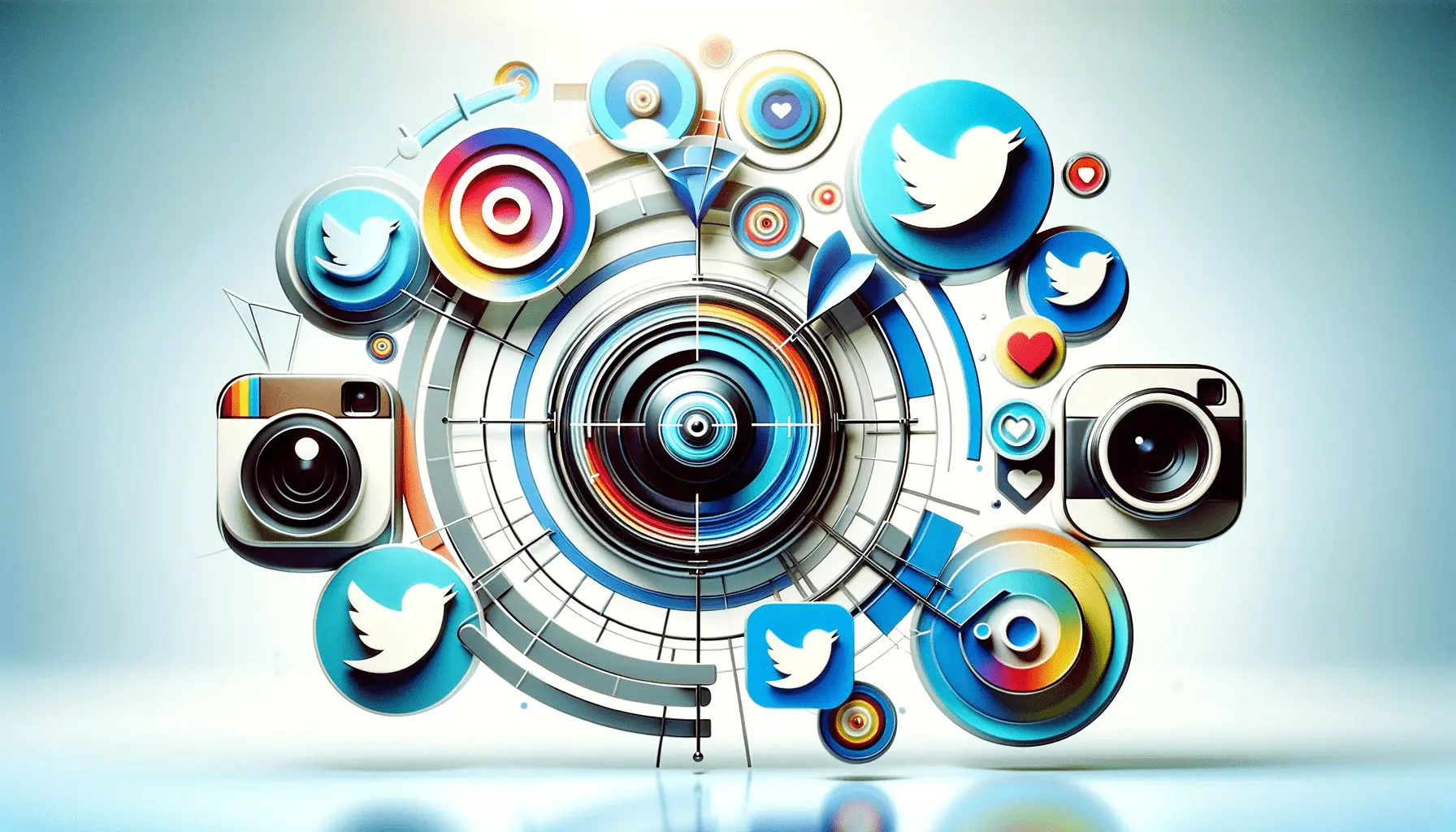Content personalization on Twitter is not just a trend; it’s a game-changer in the digital marketing world.
With millions of tweets sent out every day, standing out in the vast sea of content requires a strategy that resonates with your audience on a personal level.
This article delves into the art and science of content personalization on Twitter, exploring how it can transform your social media presence and engagement.
Twitter, as a platform, has evolved from a simple microblogging site to a powerful tool for personalization and targeted marketing.
By leveraging the power of content personalization, businesses and individuals can create a more engaging and relevant experience for their followers.
This approach is not just about reaching a wider audience, but about connecting with the right audience in a meaningful way.
- Understanding Content Personalization on Twitter
- Strategies for Personalizing Content on Twitter
- Utilizing Advanced Twitter Features for Personalization
- Integrating Personalization with Twitter Ads
- Challenges and Solutions in Twitter Content Personalization
- Best Practices for Content Personalization on Twitter
- Future Trends in Twitter Content Personalization
- Embracing the Future of Content Personalization on Twitter
- FAQs on Content Personalization on Twitter
Understanding Content Personalization on Twitter
Content personalization on Twitter refers to the process of tailoring your tweets and interactions to suit the specific interests and preferences of your audience.
It’s about delivering content that resonates with your followers, making them feel seen and understood.
This personal touch can significantly enhance user engagement and brand loyalty.
At its core, content personalization involves analyzing user data and behavior to understand what your audience likes, dislikes, and responds to.
This data-driven approach enables you to create content that is not only relevant but also timely and impactful.
Whether it’s through personalized tweets, direct messages, or tailored ads, the goal is to provide a unique experience for each user.
Key Components of Effective Personalization
Effective content personalization on Twitter hinges on several key components.
First and foremost is understanding your audience.
This involves deep diving into analytics to grasp their interests, demographics, and online behavior.
Another crucial aspect is timing.
Posting content when your audience is most active increases the chances of engagement.
Lastly, relevance is king.
Your content should not only be interesting but also add value to your audience’s Twitter experience.
Personalization also extends to ads on Twitter.
By using Twitter’s ad targeting features, businesses can ensure that their ads reach the right people at the right time.
This targeted approach not only improves the effectiveness of ad campaigns but also enhances the overall user experience on the platform.
Personalizing content on Twitter is about creating a connection with your audience by understanding and catering to their specific interests and needs.
Strategies for Personalizing Content on Twitter
To effectively personalize content on Twitter, it’s essential to employ a variety of strategies.
These strategies are designed to make your content more relevant and engaging to your specific audience.
By implementing these tactics, you can enhance the impact of your Twitter presence.
Segmenting Your Audience
One of the first steps in content personalization is segmenting your audience.
This involves categorizing your followers based on shared characteristics or behaviors.
Segmentation can be based on various factors such as demographics, interests, or engagement patterns.
This approach allows for more targeted and relevant content delivery.
- Demographic Segmentation: Categorize your audience based on age, location, gender, etc., to tailor your content accordingly.
- Interest-Based Segmentation: Analyze what topics your followers are interested in and create content that aligns with these interests.
- Behavioral Segmentation: Look at how your audience interacts with your tweets and segment them based on their engagement patterns.
Leveraging Twitter Analytics
Twitter Analytics is a powerful tool for understanding your audience and measuring the performance of your content.
It provides insights into your followers’ interests, the best times to post, and how your content is being received.
Utilizing this data can guide your content creation and personalization efforts.
- Engagement Analysis: Identify which tweets are getting the most engagement and understand why they are effective.
- Audience Insights: Gain a deeper understanding of your followers’ demographics and interests.
- Optimal Posting Times: Discover when your audience is most active to maximize the visibility of your tweets.
Creating Tailored Content
Once you have segmented your audience and analyzed their preferences, the next step is to create tailored content.
This involves crafting tweets and messages that speak directly to the interests and needs of your different audience segments.
- Personalized Messaging: Use language and themes that resonate with each segment of your audience.
- Relevant Content: Share information, news, and updates that are specifically relevant to your audience’s interests.
- Interactive Content: Engage your audience with polls, questions, and interactive media to foster a two-way conversation.
By segmenting your audience and leveraging Twitter Analytics, you can create more personalized and impactful content, leading to higher engagement and a stronger connection with your followers.
Utilizing Advanced Twitter Features for Personalization
Twitter offers a range of advanced features that can be leveraged to enhance content personalization.
These features enable you to fine-tune your content strategy, making your tweets more relevant and engaging for your audience.
Understanding and utilizing these features can significantly boost your Twitter marketing efforts.
Twitter Lists for Targeted Content
Twitter Lists are a powerful feature for content personalization.
They allow you to create curated groups of Twitter accounts, such as industry leaders, customers, or influencers.
By monitoring these lists, you can gain insights into specific topics and trends, which can inform your content strategy.
- Curating Industry-Specific Lists: Follow thought leaders and key influencers in your industry to stay on top of trends.
- Customer Lists: Create lists of your customers to understand their needs and preferences better.
- Competitor Analysis: Keep an eye on your competitors’ strategies and content through dedicated lists.
Twitter Moments for Storytelling
Twitter Moments is a feature that allows you to create and share stories using a collection of tweets.
This tool is excellent for storytelling, allowing you to compile tweets that follow a narrative or theme, making your content more engaging and memorable.
- Event Highlights: Use Moments to compile tweets from events, conferences, or webinars.
- Storytelling: Create a narrative around your brand or a specific campaign to engage your audience.
- User-Generated Content: Showcase tweets from your followers or customers to build community and trust.
Twitter Polls for Interactive Engagement
Twitter Polls are an excellent way to engage your audience interactively.
They not only provide valuable insights into your audience’s preferences but also encourage active participation in your content.
- Gathering Opinions: Use polls to understand your audience’s views on various topics.
- Product Feedback: Get direct feedback on your products or services.
- Engagement Boost: Polls can increase engagement and encourage users to interact with your content.
Advanced Twitter features like Lists, Moments, and Polls can significantly enhance content personalization, making your strategy more dynamic and user-focused.
Integrating Personalization with Twitter Ads
Integrating personalization into your Twitter advertising campaigns can significantly increase their effectiveness.
Personalized ads on Twitter are more likely to resonate with your target audience, leading to higher engagement rates and better campaign performance.
Understanding how to effectively personalize ads is key to maximizing your return on investment.
Targeting Options for Personalized Ads
Twitter offers a variety of targeting options that allow advertisers to reach specific audience segments.
These options include targeting based on demographics, interests, behaviors, and more.
By utilizing these targeting features, you can ensure that your ads are seen by the people most likely to be interested in your message.
- Demographic Targeting: Reach users based on age, gender, location, and language.
- Interest-Based Targeting: Target users based on their interests, such as specific topics, hobbies, or brands they follow.
- Behavioral Targeting: Target users based on their previous interactions with your content or similar content.
Creating Compelling Ad Content
The content of your Twitter ads should be as personalized as the targeting.
This means creating ads that speak directly to the needs, interests, and preferences of your target audience.
Personalized ad content is more likely to capture attention and drive engagement.
- Relevant Messaging: Craft ad copy that resonates with your target audience’s interests and needs.
- Visual Appeal: Use images, videos, and graphics that are likely to appeal to your target demographic.
- Clear Call-to-Action: Include a clear and compelling call-to-action that encourages users to engage with your ad.
Measuring Ad Performance
Measuring the performance of your personalized ads is crucial to understanding their effectiveness and optimizing future campaigns.
Twitter provides analytics tools that allow you to track various metrics such as engagement rates, click-through rates, and conversion rates.
- Engagement Metrics: Track likes, retweets, and replies to gauge audience engagement.
- Conversion Tracking: Use conversion tracking to measure the actions users take after interacting with your ads.
- A/B Testing: Test different versions of your ads to see which performs best with your audience.
Personalized Twitter ads, when combined with precise targeting and compelling content, can significantly enhance the effectiveness of your advertising campaigns.
Challenges and Solutions in Twitter Content Personalization
While content personalization on Twitter offers numerous benefits, it also presents certain challenges.
Navigating these challenges effectively is crucial for a successful personalization strategy.
Understanding common obstacles and their solutions can help in optimizing your Twitter content for better engagement and reach.
Overcoming Data Overload
One of the primary challenges in content personalization is managing and making sense of the vast amount of data available.
With millions of tweets and interactions happening every day, it can be overwhelming to analyze and utilize this data effectively.
- Utilizing Analytics Tools: Leverage Twitter’s analytics and third-party tools to filter and analyze data efficiently.
- Focus on Key Metrics: Identify and focus on the metrics that are most relevant to your personalization goals.
- Regular Data Review: Regularly review and update your data analysis strategies to ensure they remain effective.
Maintaining Authenticity
Another challenge is maintaining authenticity while personalizing content.
Over-personalization can sometimes lead to content that feels insincere or overly targeted, which can be off-putting to users.
- Balance Personalization and General Appeal: While personalizing, ensure your content also has a broad appeal to maintain authenticity.
- User Feedback: Regularly gather and analyze user feedback to understand how your content is being perceived.
- Human Touch: Ensure your content maintains a human and relatable tone, even when highly personalized.
Adapting to Changing User Preferences
User preferences and behaviors on Twitter are constantly evolving.
Staying updated with these changes and adapting your personalization strategy accordingly is essential.
- Continuous Learning: Stay informed about the latest trends and changes in user behavior on Twitter.
- Flexible Strategies: Develop flexible personalization strategies that can be easily adapted as user preferences evolve.
- Experimentation: Regularly experiment with new types of content and personalization techniques to see what resonates with your audience.
Ignoring the challenges of content personalization can lead to ineffective strategies and missed opportunities for engagement on Twitter.
Best Practices for Content Personalization on Twitter
Adopting best practices in content personalization can significantly enhance your Twitter strategy.
These practices are designed to optimize your content for maximum engagement and effectiveness.
Implementing them can lead to a more dynamic and successful Twitter presence.
Consistent Brand Voice
Maintaining a consistent brand voice across all your tweets is crucial for effective content personalization.
Your brand voice should reflect your brand’s personality and values, making your content instantly recognizable to your audience.
- Brand Personality: Infuse your brand’s personality into your tweets to create a unique and consistent voice.
- Tone Consistency: Ensure the tone of your tweets remains consistent, whether they are promotional, informative, or conversational.
- Brand Messaging: Align your tweets with your overall brand messaging for a cohesive social media presence.
Engaging Visual Content
Visual content is more likely to capture attention and engage users on Twitter.
Incorporating high-quality images, videos, and graphics can make your tweets stand out and increase engagement.
- High-Quality Images: Use clear, high-resolution images that are relevant to your content.
- Engaging Videos: Create short, engaging videos that convey your message effectively.
- Consistent Aesthetics: Maintain a consistent aesthetic in your visual content to enhance brand recognition.
Responsive Engagement
Engaging with your audience is a key aspect of content personalization.
Responding to comments, mentions, and messages shows that you value your audience’s input and are actively engaged in the conversation.
- Timely Responses: Respond to user interactions promptly to maintain an active and engaged presence.
- Personalized Interactions: Personalize your responses to user comments and messages to build stronger relationships.
- Active Listening: Pay attention to what your audience is saying about your brand and use this feedback to inform your content strategy.
Implementing best practices like maintaining a consistent brand voice, using engaging visual content, and being responsive in engagement are key to successful content personalization on Twitter.
Future Trends in Twitter Content Personalization
The landscape of Twitter content personalization is continually evolving, with new trends emerging as technology advances and user behavior changes.
Staying ahead of these trends is crucial for businesses and individuals looking to maintain a competitive edge on the platform.
Let’s explore some of the future trends that are likely to shape content personalization on Twitter.
Artificial Intelligence and Machine Learning
Artificial Intelligence (AI) and Machine Learning (ML) are set to play a significant role in the future of content personalization on Twitter.
These technologies can analyze large datasets to predict user behavior and preferences, leading to more sophisticated and effective personalization strategies.
- Predictive Analytics: AI can help predict trends and user preferences, allowing for proactive content personalization.
- Automated Content Creation: ML algorithms can assist in creating personalized content based on user data and engagement patterns.
- Enhanced User Insights: AI and ML can provide deeper insights into user behavior, enabling more targeted content strategies.
Interactive and Immersive Content
As users seek more engaging and immersive experiences, interactive content is becoming increasingly important.
This includes the use of augmented reality (AR), virtual reality (VR), and interactive storytelling to create more engaging and personalized content.
- Augmented Reality Experiences: Incorporating AR into tweets can provide a more immersive and engaging user experience.
- Interactive Storytelling: Using interactive narratives in tweets can increase engagement and personalization.
- Virtual Reality Integration: VR can offer unique and personalized experiences for users, enhancing brand engagement.
Personalization Ethics and Privacy
As personalization strategies become more advanced, ethical considerations and user privacy are increasingly important.
Ensuring that personalization efforts respect user privacy and adhere to ethical standards is crucial for maintaining trust and credibility.
- Data Privacy: Respecting user data privacy and adhering to regulations is essential for ethical personalization.
- Transparent Practices: Being transparent about how user data is used for personalization can build trust with your audience.
- Consent-Based Personalization: Ensuring that personalization is based on user consent and preferences is key to ethical practices.
Embracing future trends like AI-driven personalization, interactive content, and ethical personalization practices will be key to staying ahead in the dynamic world of Twitter content personalization.
Embracing the Future of Content Personalization on Twitter
In the ever-evolving digital landscape, Twitter has emerged as a crucial platform for content personalization, offering unique opportunities for brands and individuals to connect with their audience.
The journey of personalizing content on Twitter, as explored in this article, highlights the importance of understanding and adapting to user preferences, leveraging advanced features, and integrating personalization into advertising strategies.
As we look towards the future, it’s clear that embracing these elements will be key to maintaining relevance and engagement in the fast-paced world of social media.
Key Takeaways for Effective Twitter Personalization
Reflecting on the insights gathered, several key takeaways emerge for those looking to harness the power of content personalization on Twitter:
- Understanding your audience is the cornerstone of effective personalization, requiring continuous engagement and analysis.
- Leveraging Twitter’s advanced features like Lists, Moments, and Polls can significantly enhance the personalization experience.
- Integrating AI and ML in content strategies will become increasingly important for predictive analytics and automated content creation.
- Interactive and immersive content, including AR and VR, will play a pivotal role in engaging users in novel ways.
- Adhering to ethical standards and respecting user privacy is paramount in building trust and credibility in your personalization efforts.
As we navigate the complexities and opportunities of content personalization on Twitter, it’s evident that a balance of creativity, technological insight, and ethical consideration will define the success of personalization strategies.
The future of Twitter content personalization is not just about reaching a wider audience, but about creating deeper, more meaningful connections.
By staying attuned to these evolving dynamics, brands and individuals can craft a Twitter presence that is not only engaging and relevant but also resonant and impactful.
Enjoyed the article? Let its author handle your social media ads. Visit our service page to get started!
FAQs on Content Personalization on Twitter
Explore these frequently asked questions to gain deeper insights into the nuances of content personalization on Twitter.
Content personalization on Twitter involves tailoring tweets and ads to match the specific interests and preferences of your audience.
Twitter uses your data to personalize your experience, including showing interest-based ads and relevant content.
Yes, you can control personalization settings in your Twitter account to manage how your data is used.
Twitter Lists allow you to follow specific groups, aiding in targeted content creation and audience understanding.
Twitter Analytics provides insights into audience behavior and preferences, essential for crafting personalized content.
AI in Twitter personalization helps predict user behavior and preferences for more effective content targeting.
Ensure ethical personalization by respecting user privacy, being transparent, and seeking consent for data use.
Personalized ads on Twitter are generally more effective as they resonate better with the targeted audience.










